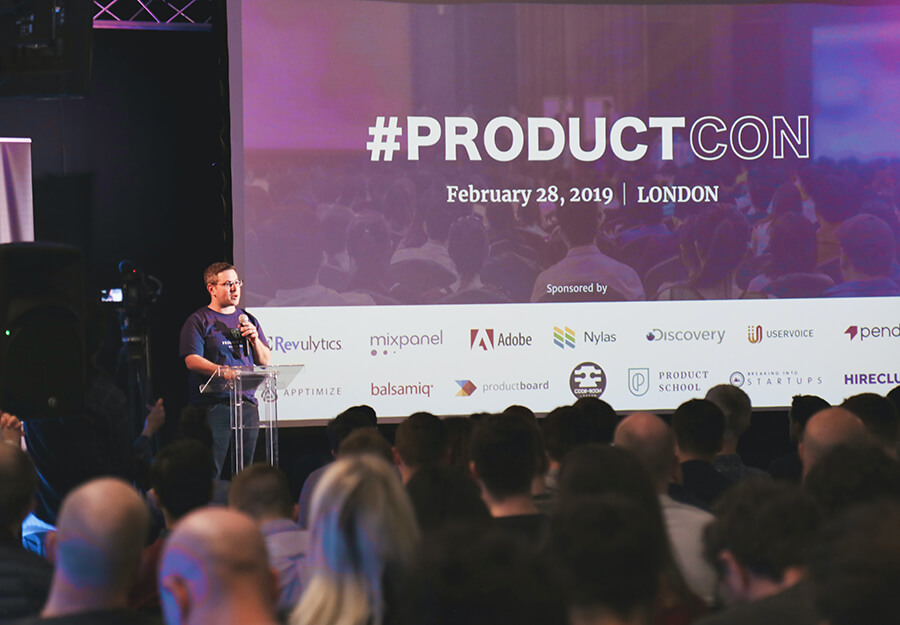Some experts believe 70–80% of jobs are not even published on listings websites, while a survey by LinkedIn shows that 85% of all jobs are filled through networking.
It’s not unusual when first people to know about a new job in a company are employees and partners, while job sites are often used only as the last resort. Therefore, if you haven’t yet tried networking, you miss a really large bulk of career opportunities.
So, what is networking and how to use it to find a job in the IT sector?
What is networking
Networking is the exchange of experience, emotions and information, expanding horizons, creating a network of personal and professional contacts, building long-term, mutually beneficial relationships, and, of course, finding new job opportunities through meeting different people.
If you’re an introvert, you might think that nothing could be worse than networking. It may be hard for you to become all social at once, but networking is a really important tool for building a successful IT career, especially in North America where professional connections and the ability to communicate sometimes matter more than hard skills.

However, networking is not about meeting as many people as possible. It’s about meeting a few well-connected people who can recommend you to a few other well-connected people. The more acquaintances you have, the more opportunities are open to you.
For example, you meet a tech executive at an IT conference, you discuss a presentation, he likes your reasoning and sees a professional in you. A month later, he recommends you to his colleague, another tech executive, who offers you a job in his company. Sounds good, doesn’t it? That’s networking in action.
If you’re planning to relocate abroad, you may need to do networking long before you move. For example, to get an American O-1 visa (a visa for extraordinary talents), you need letters of recommendation from influential specialists in your industry.
How to do networking
Before you plunge into networking, you need to do a couple of things:
- Create or update your Facebook account. Plus, complete your LinkedIn profile, add skills, enumerate your projects, and do some more things to attract the right people.
- Write a CV. Follow our recommendations to create a perfect IT resume.
- Put your GitHub account in order or create a portfolio if needed.
- Order business cards. The design doesn’t matter, the main thing is that your business card should be readable and it must contain all the necessary information: your full name, job title, and contact details.
- Prepare a self-presentation. It can be a short (no more than 20 seconds) speech about who you are and what you like.
After that, you’re ready to do some networking.

You can find useful connections and people with similar interests at so-called networking events. In fact, it can be any gatherings — from IT conferences, summits, and workshops to bar get-togethers and sporting events.
Your chances to meet well-connected tech people are higher if you visit IT events. It’s not only an opportunity to communicate with the creators of your favorite frameworks and libraries but also a perfect chance to be seen by someone who can help you build your career.
The hardest thing is to take the first step. You may feel weird the first time, being alone in the crowd and not to have anyone you know by your side. This quickly passes as the circle of acquaintances grows by itself over time like a snowball. At subsequent events, you’ll be able to meet somebody with whom you’ve communicated before.
Here’s what you need to do.
1. Register for an offline event. You can find a bunch of IT conferences on our dedicated page.
2. Dress smart. There’s no need to put on a formal suit and new shoes if you don’t feel comfortable wearing them. Put on a shirt, casual blazer, and jeans, and you will look stylish and may even give the impression of a “successful person”.
3. Consider coming to the event early, when there is a minimum of people. As the first guest, you have the chance to create the first impression and speak one-on-one with several participants before the main hustle and bustle begins and before people drown in a sea of business cards and handshakes.
4. Communicate with other visitors and participants, discuss professional topics during lunch break with them (never hide in the corner to eat alone!), and ask speakers questions after presentations. Don’t forget to immediately add people to your contacts — connect them on LinkedIn, befriend on Facebook, and ask their phone numbers.
5. Consider a late departure. Sometimes, the most interesting things happen at the very end: the most exciting talks, the most productive communication, and valuable insights — it all can happen after the crowd dissolves. Don’t miss these opportunities, stay a little longer, and you’ll be rewarded.
6. Don’t let people forget you after the event. Otherwise, you risk losing your hard-won contacts. Keith Ferrazzi, a networking guru and the author of Never Eat Alone, recommends to contact people via email, SMS or social media, or call within 48 hours of your first meeting. After that, write emails or send messages at least once every 3–4 months to the people with whom you want to keep in touch.
An easier way to expand your network of useful contacts is to start speaking yourself at conferences. Try to submit a report to a conference or a meetup, and you will automatically make acquaintances with a bunch of interesting people as they will approach you themselves and ask questions.
How to communicate at networking events
After talks and presentations, there is usually a coffee or lunch break accompanied by the inevitable small talk. It’s not just a time killer — it’s an excellent opportunity to exchange business cards and make new acquaintances.
People do small talk not just at coffee breaks. For example, you can start a conversation with a conference participant who is sitting or standing in line next to you. The general idea is to break the ice between you and strangers who may come from all over the world.
You can talk about anything — snacks, coffee, a joke made by the previous speaker, the interior design of the conference hall — with the exception of a few sensitive topics that should be omitted, such as religion, politics, and illnesses.

Here are examples of small-talk questions:
- Where are you from?
- Is it your first time in Copenhagen?
- Is it the first time you are attending this conference?
- How do you find this conference?
- What has been your favorite presentation so far?
- When does the next talk start?
- Whose speech did you like most?
- What did you think of the last presentation?
For example, the answers to the question about your thoughts on the conference, talk or presentation can be the following:
- It raised some interesting questions.
- The topic was presented from a new angle.
- The presentation has been great.
- Overall, it’s been worthwhile.
- The talk was rather in-depth.
- The talk was particularly insightful.
Never leave your companion’s remarks without any reaction. If you have nothing to say, use such replies as “I absolutely agree”, “Did/do you?”, “Are they?”, “Right / That’s right”, “Really?”, “I see”, etc.
Here are some more tips:
- Never turn a dialogue into a monologue about you. Ask questions, show interest in other people, maintain eye contact, call the other person by name during the conversation, and listen with attention and respect to what the other person has to say.
- Think about what you can give people at the event. Don’t assume that if you’re a student or a junior developer, you have nothing to offer a Forbes billionaire or Google’s lead architect. You can recommend an interesting book or article, give advice on using an IT service, or even suggest a new music album. Share a story of you designing software that helps people, or tell about your plans and ambitions.
- Remember that sharing is caring. You will definitely be successful if you help others succeed. Offer your help, introduce acquaintances to potential employers, recommend them, and suggest improvements where appropriate. By giving, you will receive twice as much.
- Adhere to the Pay Forward principle. Provide free assistance to colleagues and acquaintances. And in a few years, who knows, that young man or woman whom you helped at the beginning of their career may become a high-ranking person or the owner of a large company. And then, you’ll be able to contact him or her and ask for help.
